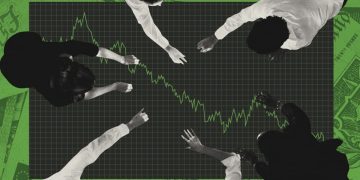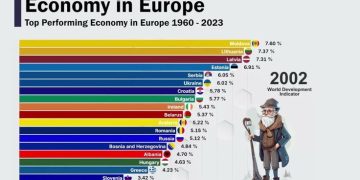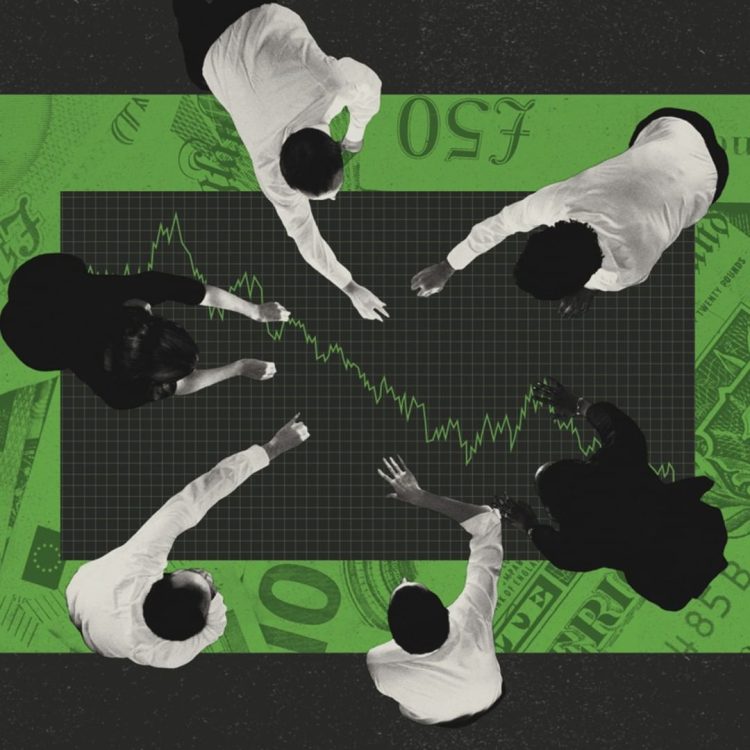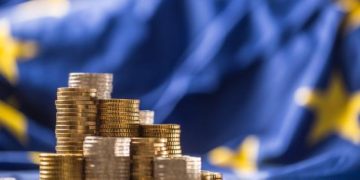I. Introduction: Europe at a Monetary Crossroads
The European financial system is undergoing a profound transformation.
Since the global shocks of the pandemic, the energy crisis, and the structural inflation resurgence, Europe has entered one of the most pivotal periods in its monetary history. The Eurozone is redefining its policy frameworks, rebalancing its monetary stance, strengthening its institutions, and navigating a rapidly changing global order.
The old world—defined by low inflation, abundant liquidity, and synchronized global interest rate cycles—has ended. In its place emerges a new monetary landscape marked by fragmentation, volatility, structural uncertainty, and competing financial pressures.
This article examines the latest trends in Europe’s monetary and financial system, analyzing the forces that will shape the continent’s future.
II. The Inflation Reset: Why the Eurozone’s Price Dynamics Have Permanently Shifted
For nearly a decade, inflation in the Eurozone was chronically below the ECB’s target.
Today, that world is gone.
1. Structural Inflation vs. Cyclical Inflation
Europe’s inflation is no longer merely cyclical (driven by temporary shocks). It has taken on a structural dimension:
- energy transition pressures (green metals, infrastructure demand)
- geopolitical energy insecurity (especially gas and electricity)
- tight labor markets
- reconfigured supply chains
- higher fiscal spending
These forces make low inflation much harder to sustain.
2. The European Labor Market Has Tightened Sharply
The demographic imbalance is severe:
- aging populations
- shrinking workforce
- skills mismatch in technology and engineering
- rising wage floors in Western Europe
- labor shortages in healthcare, transport, manufacturing
This pushes wages upward and anchors inflation expectations higher.
3. The Return of Two-Speed Inflation Within the Eurozone
Price pressures vary widely:
- Southern Europe: stronger tourism and consumption
- Central Europe: higher energy import sensitivity
- Northern Europe: wage-driven inflation
- Germany: structural industrial inflation due to energy costs
This divergence complicates monetary policymaking, as one interest rate cannot fit 20 distinct economies.
III. ECB Policy Transformation: The End of the Ultra-Low Rate Era
1. The ECB Is Moving Toward a New Policy Regime
The previous regime (2012–2021) was defined by:
- negative interest rates
- quantitative easing
- excess liquidity
- forward guidance
- unified inflation dynamics
The new regime is characterized by:
- positive real rates
- shrinking balance sheet
- greater policy discretion
- more frequent data-based adjustments
- deeper focus on financial stability
This is a historic shift.
2. The ECB’s Balance Sheet Will Continue Shrinking
Quantitative Tightening (QT) is not a temporary correction—it is a structural realignment.
The ECB is:
- reducing sovereign bond holdings
- unwinding corporate bond portfolios
- limiting reinvestments
- normalizing long-term refinancing operations (LTROs and TLTROs)
This reduces liquidity and raises long-term funding costs.
3. Why Rate Cuts Will Be Slow and Shallow
Even if inflation declines:
- wage pressures persist
- fiscal policy is expansionary
- public and private debt levels are high
- energy transition costs remain elevated
- geopolitical uncertainty influences risk premia
Thus, Europe is unlikely to return to near-zero interest rates in the foreseeable future.
IV. Fragmentation Risks: Europe’s Old Weakness Returns
Monetary tightening exposes long-standing structural weaknesses in the Eurozone.
1. Diverging Sovereign Yields
The spreads between:
- Germany vs Italy
- France vs Spain
- Core vs Periphery
are widening again.
This reflects:
- different fiscal capacities
- varying levels of investor confidence
- uneven growth prospects
The risk of fragmentation is resurfacing.
2. The Limits of the ECB’s TPI (Transmission Protection Instrument)
The TPI is designed to prevent unjustified spread widening, but it has constraints:
- political resistance
- moral hazard concerns
- strict conditionality
- balance sheet limitations
It may not be strong enough if a major sovereign crisis emerges.
3. Banking System Exposure to Sovereign Debt
European banks still hold large amounts of their own government’s debt.
This creates the infamous “doom loop”:
- weak economy → weak banks
- weak banks → sovereign stress
- sovereign stress → higher yields
- higher yields → weaker banks
The loop has not been broken.
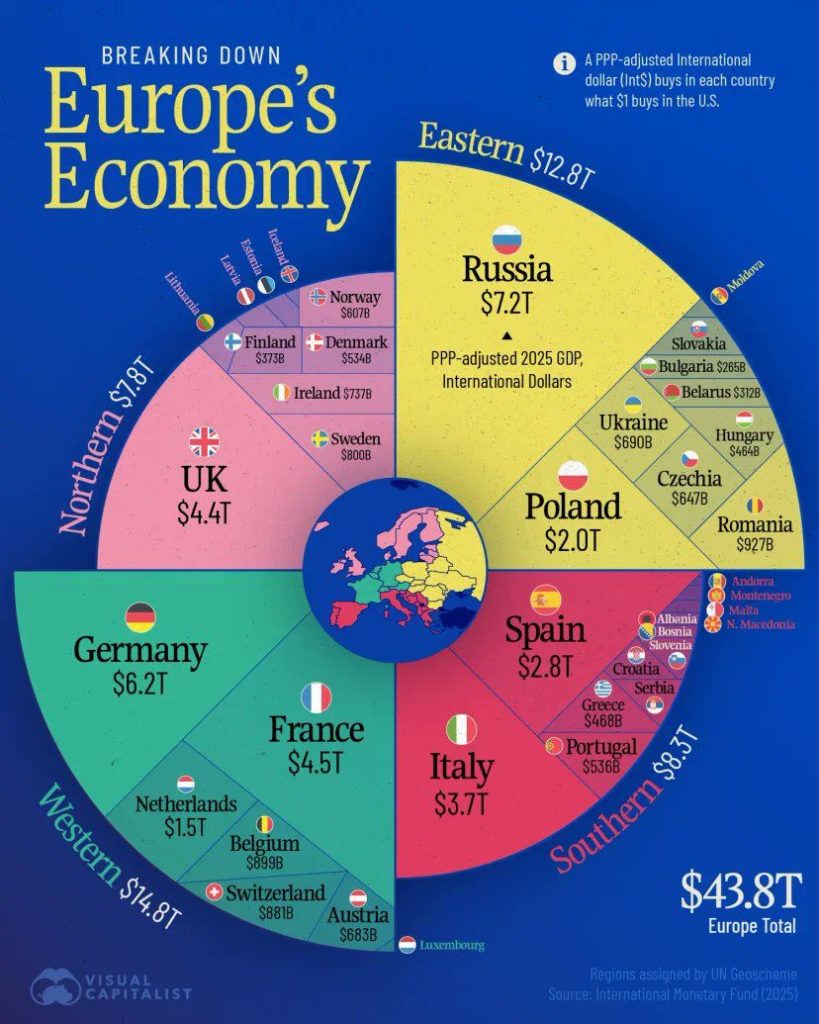
V. Europe’s Banking Sector: Stronger Than Before, Yet Facing New Threats
1. Capital Buffers Are Higher, But Profitability Is Still Weak
Since 2008, European banks have:
- strengthened Tier 1 capital
- improved liquidity
- reduced non-performing loans
- enhanced supervision
However:
- profitability lags behind U.S. banks
- cost structures are higher
- cross-border integration is limited
- digital transformation is slow in some regions
A strong banking system is essential for financial stability, but Europe’s is not uniformly strong.
2. Rising Default Risk in Corporate Loans
The ECB’s rate hikes are hitting:
- SMEs
- energy-intensive industries
- real estate developers
- leveraged finance borrowers
Defaults are rising in:
- Germany’s manufacturing sector
- retail and hospitality sectors
- commercial real estate
3. The Commercial Real Estate Crisis Is Spreading
Europe’s CRE market is under stress due to:
- remote work adoption
- higher financing costs
- declining valuations
- oversupply in certain cities
Banks with high real estate exposure (especially in Germany and Sweden) face increasing risks.
VI. Capital Markets: Europe’s Endless Struggle to Compete Globally
1. Europe’s Equity Markets Are Underdeveloped
Compared to the U.S.:
- fewer large-cap tech companies
- weaker venture capital ecosystem
- fewer IPOs
- fragmented regulatory systems
- limited risk-taking culture
This hinders capital formation.
2. The Push for a “Capital Markets Union” Is Slow
Key obstacles:
- domestic financial traditions
- political resistance
- regulatory divergence
- lack of fiscal union
- inconsistent bankruptcy laws
Without a unified capital market, Europe cannot unlock its full economic potential.
3. The Rise of Sovereign Wealth Funds as Market Movers
Middle Eastern funds are increasingly:
- buying European assets
- investing in green energy
- acquiring stakes in EU infrastructure
Europe welcomes capital, but risks losing strategic autonomy.
VII. Energy Transition Finance: The New Core of European Investment
1. Green Investment Is Now the Central Financial Driver
Europe’s climate agenda is reshaping financial flows:
- clean energy
- electric vehicles
- sustainable agriculture
- circular economy
- grid modernization
Green bonds and sustainability-linked instruments dominate issuance.
2. The Energy Crisis Accelerated Investment
The shock of 2022–2023 created:
- urgency for renewable adoption
- massive public subsidies
- surge in gas infrastructure financing
- nuclear revival in select countries
Energy security and financial stability are now intertwined.
3. The Financing Challenge: €620 Billion Per Year Needed
To meet 2030 targets, Europe must mobilize vast capital—far beyond current levels.
VIII. The Digital Euro and the Future of Europe’s Currency System
1. The Rationale for the Digital Euro
Key drivers:
- sovereignty over digital payments
- reducing dependency on U.S. payment rails
- protecting consumer privacy
- enhancing cross-border settlement
- improving financial inclusion
2. Private Sector Concerns
Banks worry about:
- deposit outflows
- reduced loan creation
- competition with stablecoins
Merchants want:
- lower fees
- interoperability
- regulatory clarity
3. The Digital Euro Will Reshape the Payment Landscape
A successful rollout would:
- accelerate fintech development
- reduce cash dependency
- increase monetary control
- enhance Europe’s technological independence
IX. Geopolitical Pressures on Europe’s Financial System
1. U.S.–China Rivalry Impacts Europe’s Capital Flows
Europe is caught between:
- U.S. pressure for tech restrictions
- China’s role as a trade partner
- supply chain realignment
- competing standards and regulations
2. Sanctions Are Redrawing Europe’s Financial Map
Sanctions on Russia triggered:
- collapse of energy trade
- rerouted commodity flows
- creation of alternative payment networks
- shifts in capital markets
Europe must now operate in a more fragmented global system.
X. The Future: Five Trends That Will Define Europe’s Financial Landscape
1. A More Hawkish ECB Than Expected
Rates will not return to zero soon.
2. Persistent Sovereign Fragility
High debt levels will remain a major vulnerability.
3. Slow and Uneven Growth
Demographics, energy, and productivity drag performance.
4. Continued Market Fragmentation
Europe will struggle to build unified financial markets.
5. A Financial System Defined by Resilience, Not Expansion
Europe’s financial future will be cautious, conservative, and highly regulated.
XI. Conclusion: Europe’s Next Financial Era Has Already Begun
The Eurozone is entering a historic new phase—one defined by:
- structural inflation
- cautious monetary policy
- sovereign fragility
- digital transformation
- geopolitical realignment
- energy transition pressures
This new monetary era will reshape investment, policymaking, and economic growth for the next two decades.
Europe is not in decline—but it is in transition.
A transition toward a more complex, more fragile, yet potentially more resilient financial architecture.













